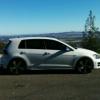Mysterious Sound On Cold Start
Announcements
-
Similar Content
-
Latest Posts
-
Yea I could, but it is amusing how shit a stock seat and belt are
-
Just to be clear, there were no lights or codes when the hiccups were occurring. Also nothing noticeable in the cars' braking. It brakes fine and the dash is clear. I only made the connection when it did throw a code and suddenly, despite the lights, it felt great again.
-
Yeah they are sliders and this was in my head before I worked out it was the speed sensor.
-
Ok so we have a smoking gun. A few weeks ago I had to replace a speed sensor that I'd fit incorrectly. I replaced the sensor and everything was fine with no lights or codes thrown any longer. When I was doing some more bedding in yesterday I got ABS and traction control lights again and, considering when this happens those things are disabled, the pedal went back to normal with smooth braking and no hiccups. The codes thrown are for the same speed sensor that I replaced. When I looked at the sensor I took out it looks like the tip of the sensor is damaged. So whatever happened to it, perhaps it has damaged the magnetic ring on the bearing (that I only replaced the other week). I'll get my boroscope in the hole where the sensor goes and see if there is any damage in there. Hopefully just the tip of the sensor is in there and the bearing is fine. 🤞🏻 It's worth noting also that the pedal hiccup happens more often and for longer periods now and totally goes away when the codes are thrown again which happens usually after 5 or so minutes of driving. Love all your help here as usual guys, thanks!
-








Recommended Posts
Create an account or sign in to comment
You need to be a member in order to leave a comment
Create an account
Sign up for a new account in our community. It's easy!
Register a new accountSign in
Already have an account? Sign in here.
Sign In Now